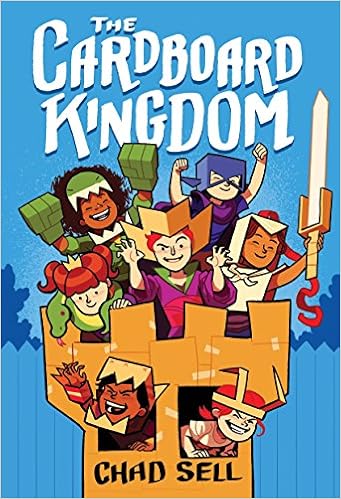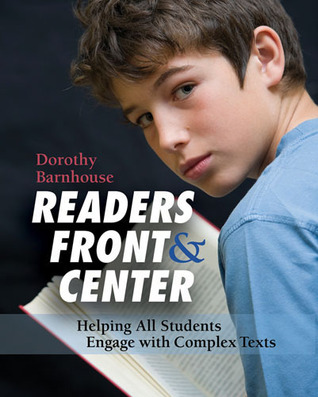Today, the book
Everyday Advocacy: Teachers Who Change the Literacy Narrative by Cathy Fleischer and Antero Garcia is available! This is an important book for all educators who want to work to change the narrative about literacy and education. This is a must-read for educators. It would be a great book to read with a group of colleagues--local or beyond--to think about how you can make a difference as part of your everyday work.
We had the chance to ask Cathy and Antero some questions about their book and the ideas behind it. We hope you learn from all they have to say and the resources they share.
Franki: Why do you think it is important for teachers to have advocacy skills?
Cathy and Antero: The public narrative surrounding teachers is too often dismissive, demeaning, and just plain wrong--based on “what it was like when I went to school” or on years of one-dimensional media depictions of either the hero teacher (who works 80 hours a week to save kids) or the uncaring teacher who doesn’t take the work seriously. Neither of these depictions fit the teachers we know, the teachers who are committed to professional learning and thoughtful curriculum development, who care deeply about students, who continually work to improve their own teaching, and who make meaningful decisions about what to teach and what not to teach.
But sadly, so many decisions about how and what we teach have been taken away from teachers and placed in the hands of people who are not regularly in schools and who quite simply don’t have the knowledge or expertise to decide how and what we should teach.
This is why teachers need advocacy skills--to share their voices, their stories, their expertise in order to shift the public narrative around teaching in order to help others (colleagues, administrators, legislators and community members) see teachers and teaching differently.
Franki: You’ve really worked to redefine advocacy for educators and to broaden the ways in which we, as teachers can see ourselves doing this work. I imagine that has been very intentional. Can you talk about that journey?
Cathy: For me it began twenty years ago when my husband (an environmental advocate) and I would talk over the dinner table about our work, and I learned how he uses advocacy measures to create campaigns on specific environmental issues. His super-smart thinking on things like cutting an issue, identifying decision-makers, and finding allies led me to start studying community organizing and advocacy, interviewing organizers in multiple fields, and thinking hard about how what they do could be adapted for teachers. I began writing about what I was learning and then offering workshops for teachers so I see how they thought advocacy might work for them, how it could be a part of their already overly busy lives rather than an add-on. This led to co-creating the
Everyday Advocacy website with former NCTE Communications Director Jenna Fournel, which features hands-on approaches to advocacy and teacher stories from these workshops. Truly, every single day I learn more and more from the amazing teachers who do this work: how they continue to advocate for ways of teaching and learning they know are important in their specific contexts.
Antero: Before learning about Everyday Advocacy from Cathy and her work with Jenna, my work with teachers tended to focus on what we refer to in the book as “big A” Advocacy. My scholarship and my experiences in classrooms often emphasized activist stances toward justice that, admittedly, can get in the way of some teachers seeing themselves as advocates. Part of what’s appealed to me about the work that Cathy leads is that every teacher can see themselves in this work, it builds on what they know, it encourages them to center student learning needs, and it is focused on results for the here and now. I think getting every teacher to see themselves as an advocate and building capacity with this skill set is an imperative for classroom teachers right now; that it still connects to bigger issues around democracy, labor, and freedom is an added bonus.
Franki: Can you talk about the importance of the word “everyday” in your title and idea about advocacy?
Cathy and Antero: Advocacy seems like a big scary word—it’s what those paid community organizers or lobbyists do to get bills passed or to organize marches with thousands of people in the street. But there are a ton of examples in the world of folks who use their voices and tell their stories as part of their day to day lives—and that’s what we mean when we use the term everyday advocacy--part-of rather than add-on.
The word also reminds us that the regularity of advocacy in the lives of teachers makes it feel less scary. Like going to the gym (in the times when it was safe to do so!), advocacy is a muscle that develops or atrophies through everyday use.
Franki: Everyone has ideas about education and it seems that teachers are no longer the people trusted when it comes to decision-making. But you have a strong belief in teachers and you have ideas about how we can change the narrative. What can teachers do locally and beyond to change that?Cathy and Antero: It’s true--we do believe in teachers! As we say in the introduction to the book, “We believe in their power to inspire, challenge, support, and care for the students with whom they work--day-in and day-out, in often challenging circumstances, and with intelligence and grace. Teachers, we know, are contemporary superheroes, and we believe they should be honored as such, each and every day.”
But teachers are not always trusted to make decisions about curriculum and pedagogy and assessment and a host of other issues. And the narrative that we mentioned above--one that is too often dismissive and demeaning--has become even stronger during this pandemic. We’ve been amazed at the ways some people are dismissing the herculean effort that teachers are putting forth and disheartened that teacher voices were too often absent from discussions of how to do school this year.
We believe that teachers can change that narrative and bring their voices into the discussion--and the book is filled with ideas about how to do that. Specifically, teachers can focus on a particular issue that impacts them in their local setting, learn as much as they can about that issue (by carefully observing students in their own classrooms, working to understand the context of their own communities, and immersing themselves in what others have written and said about the issue); seek like-minded colleagues and community members to become allies; and set out a plan to help others understand the issue differently. It’s not always easy, but as the examples in the book show, teachers are doing this work in all kinds of ways.
Franki: With limited time, what are some quick tips for how teachers might do move advocacy work?
Cathy and Antero: We think working proactively is the first big step. What can you do as a teacher to help other teachers, administrators, parents, and community members understand why you teach in the ways you do? You can host a parent night in which you ask these adults to share memories of reading and writing in their lives and then connect their memories to why you use choice reading and writing workshops. Or you might begin a children’s or young adult book club for students and parents that focuses on diverse books so parents can both up their own knowledge and watch how their students respond. Or you might share student work regularly with your families and administrators so they can see the great work that emerges when you teach in a particular way.
This proactive advocacy leads to you developing more allies as others understand your thinking and your teaching. And once they understand, we’ve found they are more willing to have your back if questions or concerns arise down the road.
Franki: Who are some people (other than the authors in your book) who educators can follow as models for their own advocacy work?Cathy and Antero: We love the blog
Teachers, Profs, Parents: Writers Who Care as an example of how you can write for the public. Check out their T
ips for Writing for Parents as one resource.
We also love Jessyca Matthew’s articles for
Teaching Tolerance and her
interview for NEA’s Social Justice Advocate of the Year.
The ELATE Commission on Social Justice has a ton of useful resources on their easy to remember site:
https://justice.education/As a professional learning community, the
Marginal Syllabus project has been a years-running effort to bridge the theories described in NCTE journals into dialogue and practice; the ideas and connections here are useful and rejuvenating.
Lastly, getting to read about the big and small forms of advocacy happening in the lives of teachers and teacher educators is always illuminating. Literacy scholar
Betina Hsieh and math teacher
Jose Vilson’s blogs are both wonderful.



































